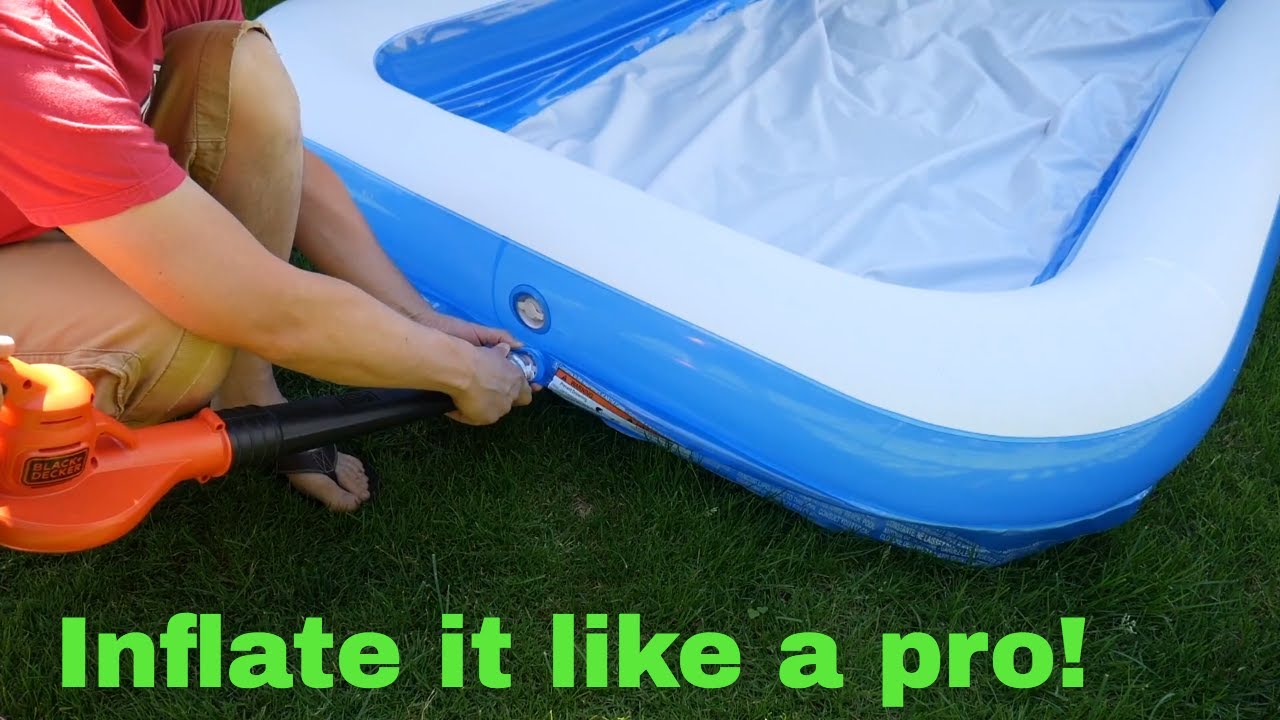Are you looking for tips on how to properly inflate and deflate your pool? Well, you’ve come to the right place! In this article, we’ll dive into the details of how to effectively inflate and deflate your pool, ensuring that you have a fun and hassle-free experience. From choosing the right pump to maintaining the perfect air pressure, we’ll cover it all. So, grab your swim trunks and let’s get started!
When it comes to inflating and deflating your pool, there are a few key things to keep in mind. First, make sure you have the right equipment. Investing in a high-quality electric or manual pump can make the process much easier and faster. Next, take your time inflating the pool to ensure that it is properly filled with air. Keeping an eye on the air pressure and adjusting as needed will ensure that your pool is stable and safe to use. And when it’s time to deflate, be sure to do it carefully and remove any excess water to prevent damage. Want to learn more about these topics and discover even more tips and tricks? Stay tuned for our upcoming articles where we’ll delve deeper into the world of inflatable pool care and maintenance.
Tips for Inflating and Deflating Your Pool Properly
Inflatable pools are a popular choice for individuals and families looking to enjoy the refreshing waters without the cost and maintenance associated with traditional in-ground pools. These versatile and portable pools come in various sizes, shapes, and designs, providing a fun and convenient way to beat the summer heat. However, to fully enjoy your inflatable pool, it is essential to know how to properly inflate and deflate it. In this article, we will guide you through the process, ensuring that you can set up and pack away your pool with ease.
Choosing the Right Size and Shape of an Inflatable Pool
Consider the available space in your backyard
Before purchasing an inflatable pool, it is crucial to assess the available space in your backyard. Measure the area you intend to place the pool and ensure that you have adequate room for the size and shape you desire. It is also essential to consider any obstructions such as trees, fences, or furniture that may limit the space available. By doing so, you can select a pool that fits perfectly and allows for easy movement around it.
Determine the purpose of the pool
Different individuals have distinct purposes for purchasing an inflatable pool. Some may want it for their kids to play in, while others may want it for relaxation and lounging. Understanding the primary purpose of your pool will help you determine the ideal size and shape. If you have young children, a shallow pool with appropriate safety features may be the best option. On the other hand, if you plan on using it for relaxation and lounging, consider a pool with built-in seats or a larger size.
Evaluate the age and preferences of the users
The age and preferences of the users also play a significant role in selecting the right size and shape of an inflatable pool. If you have younger children, a smaller pool with a kid-friendly design may be more suitable. Older children or adults may prefer a larger pool that allows for more movement and play. By considering the age and preferences of the users, you can ensure that everyone can fully enjoy the pool.
Exploring Different Price Ranges and Options
Compare the prices of inflatable pools from different brands
Inflatable pools come in a wide range of prices, depending on factors such as size, material, and brand. It is essential to compare prices from different brands to find the best deal for your budget. While it may be tempting to immediately go for the cheapest option, it is important to consider the quality and durability of the pool. Investing in a pool made from high-quality materials may save you money in the long run as it will last longer and require fewer repairs or replacements.
Consider the durability and materials used
The durability of an inflatable pool is crucial, especially if you plan on using it frequently or leaving it set up for an extended period. Look for pools made from strong and puncture-resistant materials such as PVC or reinforced vinyl. Additionally, check for features like sturdy seams and reinforced handles or straps. These factors will contribute to the overall durability of the pool and ensure that it can withstand regular use without constant maintenance.
Research the additional features and accessories offered
Some inflatable pools come with additional features and accessories that can enhance the overall swimming experience. These may include built-in water sprayers, inflatable slides, or even cup holders. While these features may add to the price, they can also provide added entertainment and convenience. Take the time to research the different options available and decide if any of these additional features are worth the investment for you and your family.
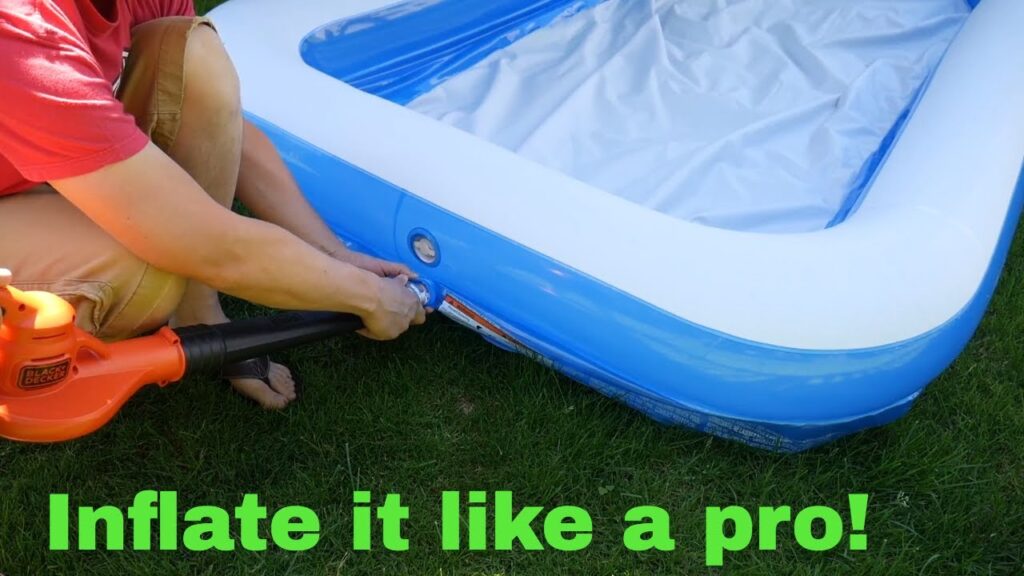
Understanding the Various Types of Inflatable Pools
Inflatable ring pools
Inflatable ring pools, also known as “doughnut” pools, are the most common type of inflatable pools. They consist of a single inflated ring that supports the pool walls. These pools are typically easy to set up and deflate, making them a convenient option for individuals who want a quick and portable swimming solution.
Inflatable frame pools
Inflatable frame pools are similar to inflatable ring pools but feature an additional inflatable frame that provides extra support and stability. This design allows for larger pool sizes and deeper water levels. The inflatable frame serves as a perimeter around the pool, enhancing its structural integrity. These pools are a popular choice for individuals who want a more robust and durable inflatable pool.
Inflatable lounge pools
Inflatable lounge pools offer a unique and relaxing experience, as they are designed with built-in seats and lounging areas. These pools often have a larger surface area and deeper water levels, allowing users to fully recline and enjoy the water. Lounge pools are an excellent option for individuals who want to combine the benefits of a pool and a comfortable seating area.
Ensuring Proper Inflation and Deflation Techniques
Follow the manufacturer’s instructions
Each inflatable pool comes with its own set of manufacturer’s instructions for inflation and deflation. It is crucial to carefully read and follow these instructions to ensure proper setup and pack away. The instructions will provide guidance on the recommended air pressure, inflation techniques, and deflation methods. Following these instructions will not only ensure the pool’s stability and longevity but also prevent any accidental damage or injuries during the process.
Use an air pump for efficient inflation
Using an air pump designed for inflatable pools is the most efficient and convenient way to inflate your pool. These pumps are specifically designed to provide the appropriate amount of air pressure while minimizing the effort required. Manual pumps can be time-consuming and exhausting, especially for larger pools. Investing in an electric or battery-powered air pump will save you time and energy, enabling you to set up your pool more quickly and easily.
Release the air slowly during deflation
When it comes time to pack away your inflatable pool, it is important to release the air slowly and evenly. This ensures that the pool deflates properly without any sudden pressure changes that could cause damage. Open all the valves and allow the air to escape gradually. You can also lightly press on the pool’s walls to help expel the air. Avoid puncturing or cutting the pool during deflation, as this could render it unusable for future use.
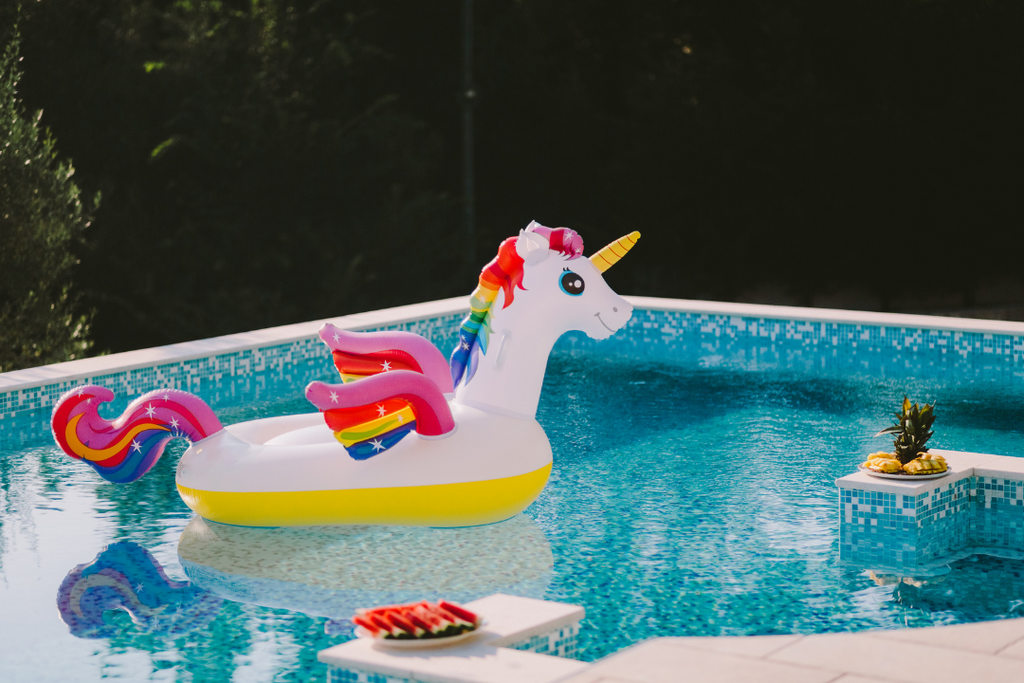
Maintaining Water Quality and Hygiene
Regularly test and balance the pH levels
Maintaining proper water quality is essential for the health and safety of swimmers. Regularly test the water’s pH levels using a testing kit and make any necessary adjustments to ensure they fall within the recommended range. Balancing the pH levels will help prevent bacteria growth, reduce eye and skin irritation, and optimize the effectiveness of sanitizers.
Use appropriate sanitizers and chemicals
Using appropriate sanitizers and chemicals is crucial for keeping the water clean and free from harmful bacteria. Chlorine or bromine tablets can be used to disinfect the pool water and kill any microorganisms. Follow the manufacturer’s instructions for the correct dosage and application method. Additionally, consider using algaecides to prevent the growth of algae and other unwanted organisms.
Clean the pool and filter regularly
Regular cleaning and maintenance of your inflatable pool are vital for keeping the water clear and healthy. Remove any debris or foreign objects from the pool using a skimmer net or pool vacuum. Additionally, clean the pool walls and floor using a soft brush and mild cleaning solution. Don’t forget to clean and backwash the filter regularly to ensure it is working efficiently.
Safe Usage and Pool Rules
Establish and communicate pool rules
Establishing and communicating pool rules is essential for maintaining a safe swimming environment. Clearly state the rules regarding diving, running, and rough play. Emphasize the importance of adult supervision for young children and the use of appropriate personal flotation devices. By setting and enforcing clear rules, you can prevent accidents and injuries and ensure that everyone can enjoy the pool safely.
Supervise children at all times
Children should always be supervised when using an inflatable pool, regardless of their swimming abilities. Assign a responsible adult to actively watch the children and prevent any unsafe behaviors. Ensure that the designated supervisor is not distracted by other activities and has a clear view of the pool and its users. Remember, accidents can happen quickly, and immediate adult intervention is essential to prevent drowning or other accidents.
Ensure proper water depth
When setting up your inflatable pool, ensure that the water depth is appropriate for the skill level and age of the swimmers. Shallow water areas should be clearly marked to prevent diving or jumping in areas with insufficient depth. If you have young children, consider filling the pool with less water to create a safer environment. Always prioritize safety over fun and adjust the water depth accordingly.
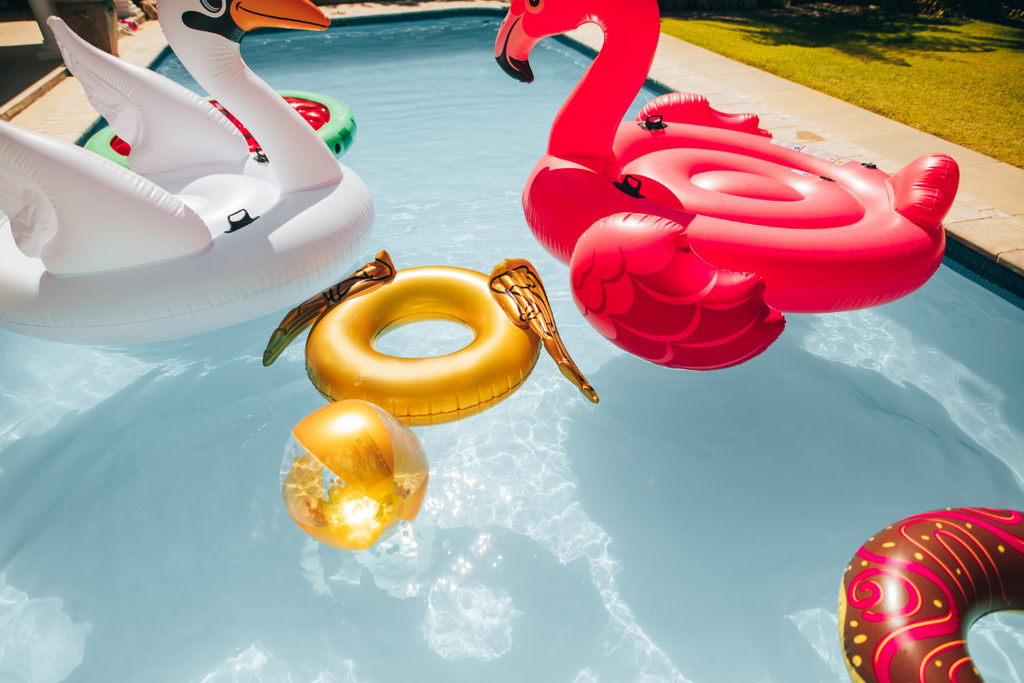
Storage and Winterization
Clean and dry the pool before storage
Before storing your inflatable pool, it is important to clean and dry it thoroughly. Remove any dirt, debris, or algae from the pool walls and floor using a soft brush and mild cleaning solution. Rinse the pool with water to remove any cleaning residue. Allow the pool to dry completely to prevent the growth of mold or mildew during storage.
Deflate and fold it properly
To ensure a compact and neat storage, deflate the pool completely before folding it. Release the air slowly and remove any remaining air by pressing on the pool’s walls. Start folding the pool from one end to the other, ensuring that all air is expelled. Once folded, secure the pool with straps or ties to prevent it from unfolding during storage. Remember to follow the manufacturer’s instructions for specific folding techniques.
Consider using a pool cover for extra protection
If you plan on storing your inflatable pool outdoors, consider using a pool cover for additional protection. A pool cover will shield the pool from dirt, leaves, and other debris, reducing the amount of cleaning required when you want to set it up again. Choose a cover that fits your pool snugly and ensure it is securely fastened to prevent wind from blowing it away.
Repairing Common Inflatable Pool Issues
Identifying and patching leaks
Leakage is a common issue in inflatable pools, but it can be easily fixed with the right tools and techniques. To identify a leak, inflate the pool and listen for any hissing sounds or observe areas where the pool deflates more quickly. Once the leak is located, clean and dry the area thoroughly. Apply a suitable patch, following the manufacturer’s instructions. Ensure that the patch adheres securely to the pool and is properly sealed to prevent further leakage.
Fixing valve or air pump problems
If you experience issues with the valves or air pump of your inflatable pool, it is important to address them promptly. Check the valves for any debris or obstructions that may be preventing proper inflation or deflation. Remove any blockages and ensure that the valve is securely closed or opened when necessary. If you encounter problems with the air pump, check the power source or batteries and ensure that all connections are secure.
Addressing structural damages
Structural damages to an inflatable pool can occur due to accidents or excessive wear and tear. If you notice any tears, punctures, or other damages to the pool’s walls or floor, it is important to address them promptly. Clean and dry the damaged area thoroughly. Apply a suitable patch or repair kit designed for inflatable pools, ensuring that it is securely sealed and provides sufficient reinforcement. If the damage is extensive or irreparable, it may be necessary to replace the pool.
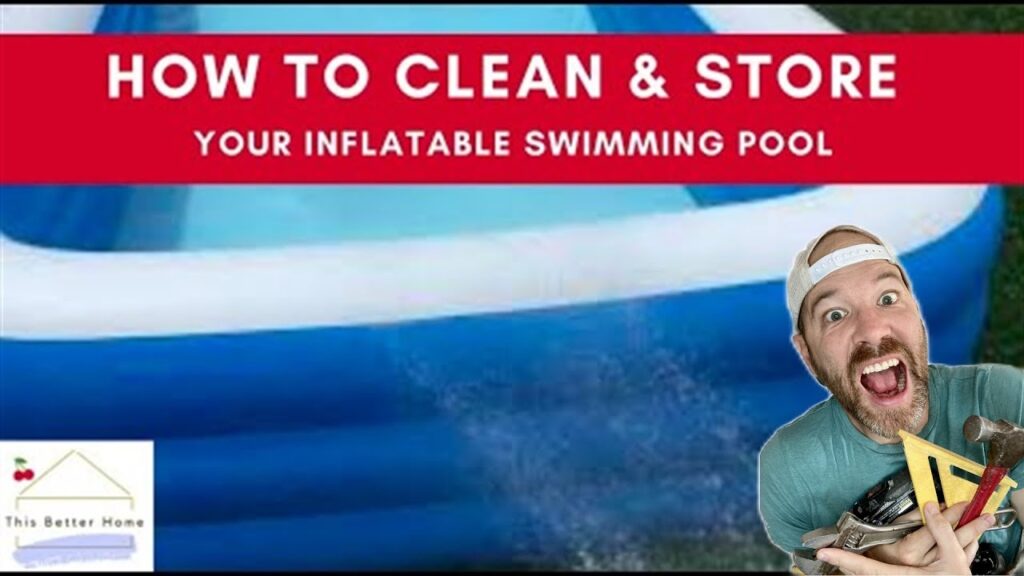
Maximizing Fun and Entertainment
Adding water toys and floats
To enhance the fun and entertainment factor of your inflatable pool, consider adding water toys and floats. These can range from inflatable balls and rings to water slides and floating loungers. Water toys and floats provide additional ways to enjoy the pool and can keep swimmers of all ages entertained for hours. Be sure to choose toys and floats that are appropriate for the pool size and the swimmers’ skill levels.
Organizing pool games and activities
Pool games and activities are a great way to keep everyone engaged and encourage friendly competition. From classic games like Marco Polo and Sharks and Minnows to pool volleyball and basketball, the options are endless. Tailor the games and activities to the age and preferences of the participants, ensuring that they are safe and enjoyable for all. Remember to establish clear rules and boundaries to prevent accidents or injuries.
Creating a relaxing poolside ambiance
Inflatable pools are not just for active play; they can also provide a tranquil and relaxing atmosphere. Create a poolside ambiance by adding comfortable seating, shade umbrellas, and soft lighting. Consider playing soothing music or installing a Bluetooth speaker system for a complete sensory experience. By transforming your pool area into a serene oasis, you can unwind and recharge both body and mind.
Health Benefits and Exercise Options
Low-impact exercises in the pool
Inflatable pools offer a unique opportunity to engage in low-impact exercises that are gentle on the joints while providing an effective workout. Activities such as water aerobics, leg kicks, and arm exercises in the water are perfect for improving cardiovascular fitness, toning muscles, and increasing flexibility. The buoyancy of the water reduces strain on the body, making it an ideal environment for individuals with joint pain or mobility issues.
Improving cardiovascular fitness
Regular swimming or swimming laps in an inflatable pool is an excellent way to improve cardiovascular fitness. Swimming engages multiple muscle groups, increases heart rate, and improves lung capacity. Set goals for yourself, such as increasing the number of laps or reducing lap times, to continually challenge and improve your cardiovascular endurance. Remember to warm up before swimming and cool down afterward to prevent injury.
Stress relief and relaxation
The calming nature of water makes inflatable pools an ideal place to unwind and de-stress. The weightlessness and gentle resistance of the water can help alleviate tension and anxiety, promoting relaxation and mental well-being. Consider practicing mindfulness or meditation techniques while floating or simply take a few moments to close your eyes and enjoy the soothing sensations of the water. Creating a peaceful and stress-free pool environment will enhance the overall mental and physical health benefits.
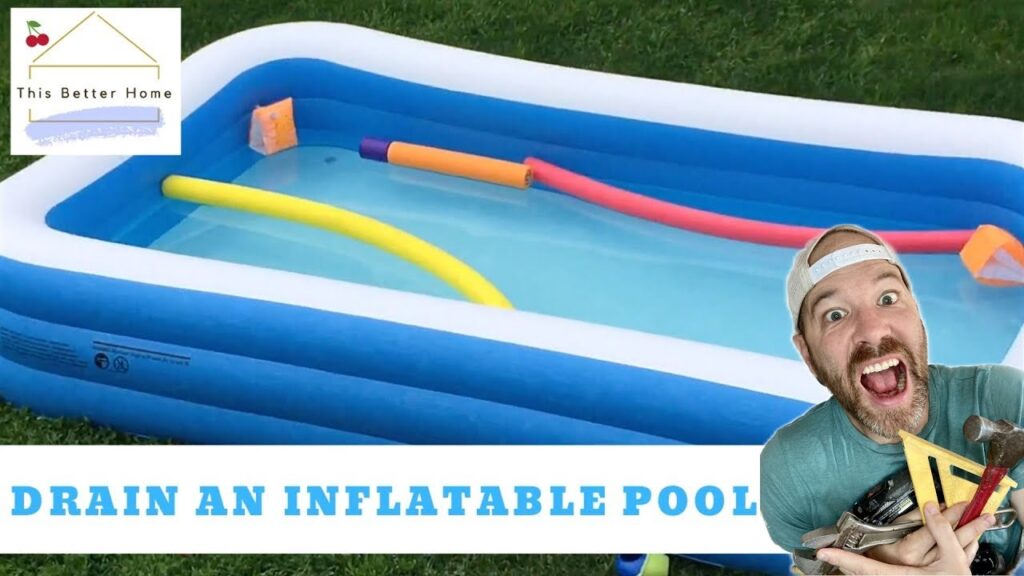
Inflatable Pool Safety Measures
Ensuring adequate supervision
Safety should always be a top priority when using an inflatable pool. Proper adult supervision is crucial, especially when young children are present. Designate a responsible adult who can actively watch the pool and swimmers, ensuring that all safety guidelines are followed. The supervisor should be alert, free from distractions, and capable of responding to emergencies promptly. Remember, accidents can happen in an instant, so never leave children unattended in or around the pool.
Using proper flotation devices
Inflatable pools are not a substitute for proper swimming skills or life-saving devices. If individuals using the pool are not proficient swimmers, it is important to use appropriate flotation devices. Life jackets and arm floats are examples of flotation devices that can provide additional support and increase safety. Ensure that the devices are properly fitted and adjusted to the individual, and never rely solely on flotation devices to prevent accidents.
Handling emergencies and CPR
While it is crucial to take preventative measures to minimize the risk of emergencies, it is also important to be prepared for any unforeseen circumstances. Ensure that at least one adult present knows CPR (Cardiopulmonary Resuscitation) and basic first aid. CPR training can be obtained through local community centers, hospitals, or certified instructors. By being knowledgeable and prepared, you can provide immediate care and potentially save lives in emergency situations.
Personalizing Your Inflatable Pool Experience
Choosing unique pool designs and patterns
Inflatable pools come in a variety of designs and patterns, allowing you to express your personal style and preferences. Whether you prefer bright and bold colors or subtle and sophisticated patterns, there is a pool design out there for you. Consider choosing a design that complements your backyard aesthetic or reflects your favorite themes. Personalizing your pool will not only make it visually appealing but also add a touch of personality to your outdoor space.
Customizing pool accessories
In addition to pool design, you can also customize your inflatable pool experience with accessories. Add floating drink holders, waterproof speakers, or colorful pool lights to enhance the ambiance and functionality of your pool. Personalize your pool area with comfortable seating cushions, poolside umbrellas, or even a mini-bar. Get creative and design a pool experience that is uniquely yours.
Creating themed pool parties
Inflatable pools are perfect for hosting fun and memorable pool parties. Take your pool experience to the next level by organizing themed pool parties. Whether it’s a Hawaiian luau, a retro 80s party, or a pirate-themed gathering, the possibilities are endless. Decorate the pool area with themed decorations, prepare themed snacks and drinks, and encourage guests to dress up. Themed pool parties are a great way to create lasting memories and bring people together.
Environmental Considerations
Using eco-friendly pool materials
When selecting an inflatable pool, consider opting for one made with eco-friendly materials. Look for pools that are free from harmful chemicals, phthalates, or other toxic substances. Additionally, choose pools made from recyclable materials to reduce your environmental impact. By making environmentally conscious choices, you can enjoy your inflatable pool while minimizing harm to the planet.
Conserving water and minimizing waste
Water conservation is an important consideration when using an inflatable pool. To minimize water waste, avoid frequently draining and refilling the pool. Instead, properly maintain the water quality through regular testing, cleaning, and the use of appropriate sanitizers. Consider using a pool cover to prevent water evaporation and reduce the need for additional water. Additionally, encourage pool users to practice water-saving habits, such as not splashing excessively or leaving the pool faucet on.
Proper disposal of pool-related products
When it comes time to dispose of a worn-out or damaged inflatable pool, it is important to do so responsibly. Check with your local recycling centers or waste management facilities to determine the proper disposal method for your pool. If possible, consider repurposing the pool or donating it to someone in need. By taking the necessary steps to dispose of your pool in an environmentally friendly way, you can reduce landfill waste and contribute to a more sustainable future.
Conclusion
Inflatable pools provide a convenient and enjoyable way to beat the heat and create lasting memories. By choosing the right size and shape, comparing prices and options, understanding the different types of inflatable pools, and following proper inflation and deflation techniques, you can maximize the longevity and usability of your pool. Additionally, maintaining water quality, following safety measures, and personalizing your pool experience will ensure that you and your loved ones can enjoy your inflatable pool safely and to the fullest. Remember to prioritize proper maintenance and safety at all times, and let the fun and relaxation begin!
